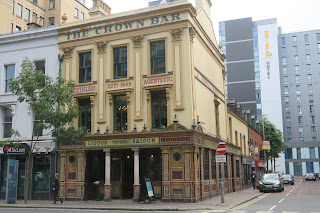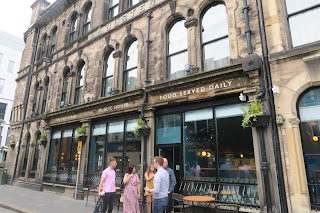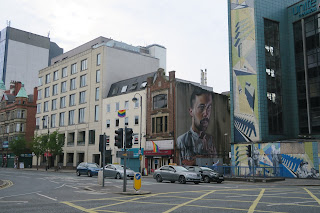In 1177 the Norman lord John de Courey built a castle here and a small settlement grew up around it - and hence began Belfast. By the early 19th century, Belfast became a major port. It played a key role in the Industrial Revolution, becoming the biggest linen-producer in the world, earning it the nickname “Linenopolis”. By the time it was granted city status in 1888 it was a major centre of Irish linen production, tobacco-processing and rope making. Shipbuilding was also a key industry; the Harland and Wolff shipyard, which built the RMS Titanic, was the world’s biggest shipyard. The partition of Ireland in 1920 gave Belfast a new role as the capital of Northern Ireland.
Belfast had always been the scene of various episodes of sectarian conflict between its Catholic and Protestant population, now often termed ‘republican’ and ‘loyalist’ respectively, or ‘nationalist’ and ‘unionist’. The most recent example of this conflict was known as the Troubles - a civic conflict that raged from 1969 to 1998. During this time the city saw more than its fair share of violence and bloodshed. Shocking news images of terrorist bombings, sectarian murders and security forces’ brutality made Belfast a household name around the world. The 1998 Good Friday Agreement raised hope for the future...and although things are better, you can tell that the history is still very recent, and raw!
The photos in this post are all of when I was out and about exploring - some of Belfast’s more notable buildings and just enjoying the scene on the street:
Albert Memorial Clock Tower
St. Malachy’s Church was built between 1841 and 1844. Its exterior resembles a Tudor castle complete with narrow slits and turrets and the jewel-like interior’s fan-vaulted ceiling replicates Westminster Abbey’s Henry VII chapel.
In 1888 Queen Victoria granted Belfast the status of city and it was agreed that a grand and magnificent building was required to reflect this new status. City Hall opened its doors in 1906, at a time of unprecedented prosperity and industrial might for the city. Belfast’s classical Renaissance-style City Hall was built in fine, white Portland stone, and inside there is sumptuous, wedding-cake Italian marble and colourful stained glass windows.
Oh - they needed a volunteer to try on the Lord Mayor’s robes and sit on his throne in the Council Chamber
On the grounds of City Hall, a memorial to the victims of the Titanic
There are not many historical monuments you can enjoy while savouring a pint of beer, but in Belfast the Crown Liquor Saloon is one of them. Built in 1885, a long, highly decorated bar dominates one side of the pub, while on the other is a row of ornate wooden snugs.
The Crown was built to pull in a posh clientele from the Grand Opera House across the street
(Somehow I don’t think this would bring in the ‘posh’ clientele)
Stormont’s dazzling white neoclassical facade is one of Belfast’s most iconic, occupying a dramatic position at the end of a gently rising 1.5km avenue. It was completed in 1932 and was the seat of the parliament of Northern Ireland. Since 1998 is has been the home of the Northern Ireland Assembly. This is where, in 2007, Ian Paisley and Martin McGuinness - the best of enemies for decades - laughed and smiled as they were sworn in as first minister and deputy first minister respectively.
Titanic Belfast, an unmissable multimedia extravaganza that charts the history of Belfast and the creation of the world’s most famous ocean liner, the Titanic.
Belfast is still a major port, with commercial and industrial docks dominating the shoreline
The River Lagan which runs through Belfast
Queen’s University Belfast
Whites Tavern - established 1630, is Belfast’s oldest tavern.
Custom House - built 1854-1857
Bigfish - A giant ceramic salmon sculpture symbolizing the River Lagan’s regeneration. It’s covered with tiles depicting the history of Belfast
























































No comments:
Post a Comment